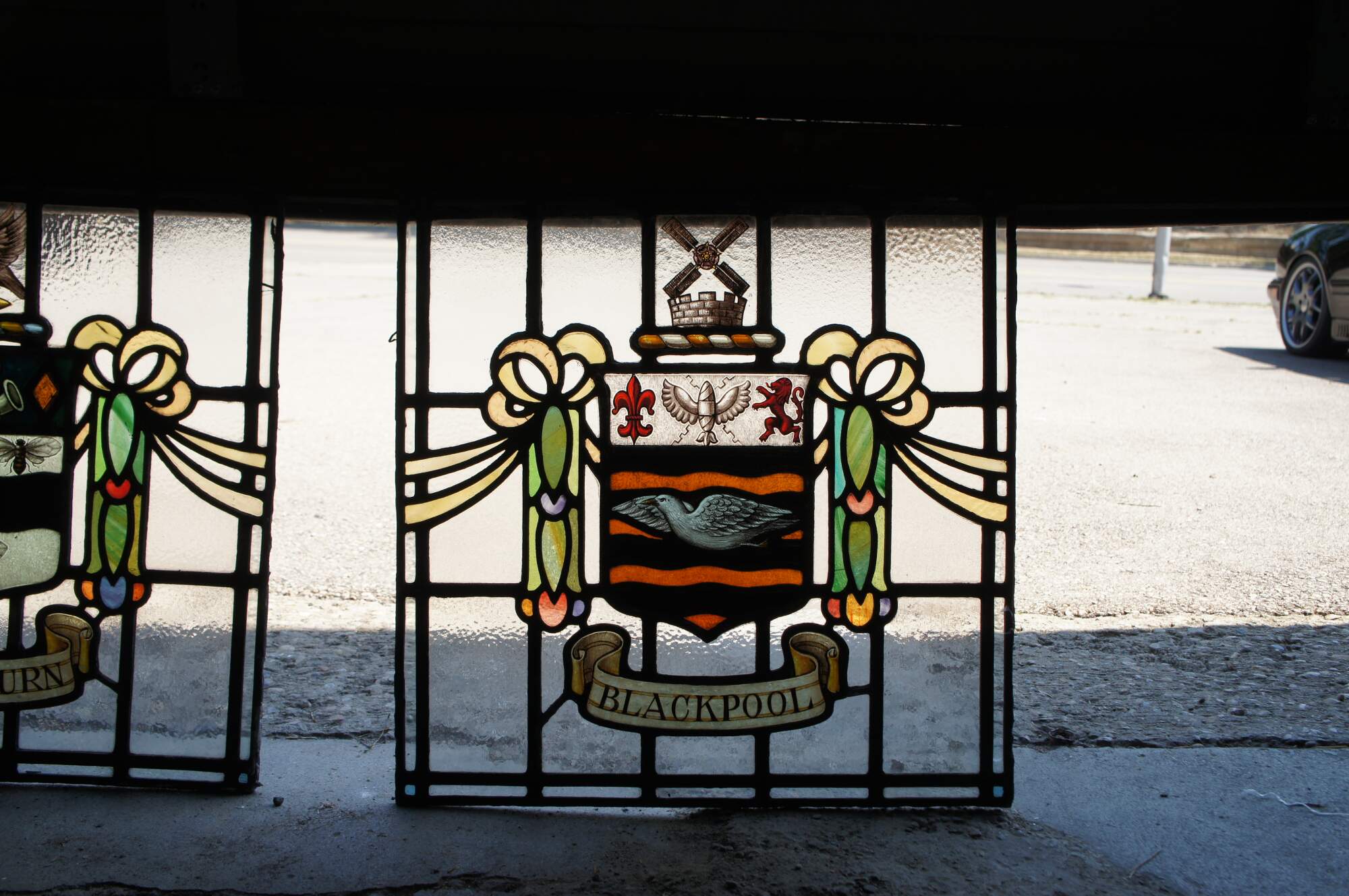
4 Antique English Armorial Heraldic Coat of Arms Leaded Stained Glass Windows
$10,000.00
Shipping:
Free Shipping Included
Delivery:
Estimated 2-15 Business Days
Payments:
Credit Card, Check, Cash, PayPal, Apple Pay, Venmo
Returns:
30 Days 100% Money Back Guarantee, Buyer Pays Return Shipping
Description
A fascinating set of 4 Victorian late 19th century English leaded stained glass windows. These beautiful specimens showcase the wonderful Heraldy of the United Kingdom with the shields and coat of arms for Blackburn, Blackpool, Liverpool and Lancaster. Each shield is set in the middle of a lattice pebbled glass window and flanked by ribbons and colorful foliate detail. The windows are all labeled at the bottom and sequence perfectly allowing for them to be paired together in any installation.
Origin/meaning
-Blackburn
The arms were officially granted on February 14, 1852.
The wave across the middle of the shield is the Black Burn that names the town. The field of the arms represents the calico industry. The bees are symbols of industry and also suggest the initial B of blackburn's name. The bugle horn refers to the ancient royal forest. The fusils are from the arms of Joseph Feilden, then lord of the manor, and also suggest spinning.
The crest has a dove and olive branch, a popular charge in Victorian civic arms. He stands on a weaver's shuttle. The crest represents the beneficial results emanating from the art of weaving.
-Blackpool
The arms were officially granted on June 10, 1899.
The field of the arms is made up of black and gold waves. The black is a reference to the town's name, the gold to the miles of sandy beaches, and the waves for the sea. The seagull tells us that this is a seaside town.
Between a fleurs-de-lys for the Banks family and a lion for the Cocker family is a thunderbolt. This represents the generation of electricity and the town's famous electric trams.
The crest has tower to suggest grandeur and solidity, above which is a pair of windmill sails, symbol of the Fylde area of Lancashire.Arms (crest) of Blackpool
- Liverpool
The arms were officially granted on March 22, 1797. Supporters granted on the 23rd of March 1797.
The arms show a cormorant with a piece of seaweed in its beak. The cormorant also appears on the crest.
The arms shows the importance of the sea to the city of Liverpool.
The cormorant is often referred to as the Liver Bird, and is used widely in the city. Liverpool was founded in 1207 by King John. He needed a new port to ship his troops to Ireland and to control the Irish Sea. The new town adopted King John's seal as its own. The seal showed the eagle of St John holding a sprig of broom in its beak. The broom, or planta genista was the symbol of the royal house of the Plantagenets.
In 1644 the seal was lost and a new seal was made. For some strange reason the eagle was replaced by a cormorant, a more familiar bird in the area. It is likely that the artist mistook the eagle for a cormorant. The piece of broom was replaced by a piece of seaweed. The cormorant became later known as a mythical liver bird.
- Lancaster
The fleurs-de-lis and lion were part of the old arms of the city, and are themselves derived from the arms of the Duchy of Lancaster. Each lion stands on a garb for the two Rural District Councils.
Condition
Good Antique Condition
Dimensions
23" x 23" x .25"


















